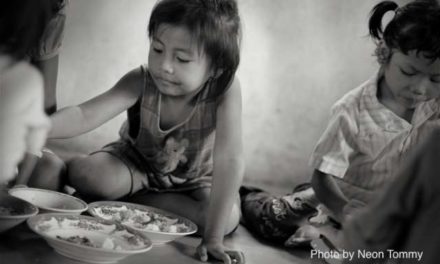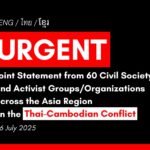More than 50 representatives from indigenous communities and social organizations in the Philippines, India, and Thailand are meeting Manila and Cebu from April 29 to May 2nd with indigenous leader Blanca Chancosa from Ecuador to discuss the native Andean concept of vivir bien (“living well”) and related alternative visions from indigenous peoples in Asia and to speak about struggles to achieve their rights.
The meeting is called “Learning from Our Roots, Advancing Our Struggles: Continuing Conversations on Vivir Bien and Alternative Pathways for Asia”. It follows a set of initial discussions on this topic organized in 2013 by Focus on the Global South and partners in the Philippines, Thailand and India. This was an opportunity for collective reflection on finding solutions to the current economic and climate crises, to examine similar values in Asian indigenous thought, and to build a dialogue between indigenous groups and social movements on the issue.
Last year’s discussions showed us that indigenous groups and social movements do have their own conceptions and articulations of the philosophy of “living well” that guide and inspire their struggles against the dominant development paradigm.
Vivir bien (or buen vivir) is a Spanish phrase that refers to the way of life of indigenous peoples in South America. The Aymara call it sumaqamaña, the Quechua sumakkawsay, the Guaraní, ñandereko, and Peruvian Amazonian groups Kametsa Asaiki, and. It can be translated as “living well”, “good life”, “knowing how to live”, “inclusive life”, or “sweet life”.
Indigenous people in the Philippines use different terms in native languages for what they call “simple life”, where one has enough to enjoy life. Some examples are hayahay, hamugaway, and gumpi-a katubo. In India, some communities adhere to the Adivasi way of life (the word means “original inhabitant”). In many cases, there are no exact words, but there are similar practices.
In India, the indigenous people or Adivasis have paid the highest price for development because their regions are rich in mineral resources such as coal. They have yielded most of their lands to the state for the sake of the “larger economic good” promised by big dams, mining projects and forest conservation. Recently, tribal groups in the northeastern state of Orissa had a major victory against British mining giant Vedanta Resources because the Indian authorities quashed the company’s plan to mine in their sacred Niyamgiri Hills.
In Thailand, indigenous communities have struggled to attain rights to citizenship and access to land. Victories include a 2010 cabinet resolution on the “rehabilitation of the way of life and remediation of the problems of indigenous people”, which addressed the right to ethnic and cultural identities, natural resource management, citizenship, cultural heritage and education. The Pakarkayor hill tribe in northern Thailand and Urak Lawoy of Rawai in Phuket were selected as pilot projects, but political instability in Thailand and frequent changes in government continue to threaten the continuity, enforcement and implementation of the resolution.
In the Philippines, struggles for the defense of indigenous rights, dignity, land and territories and for building alternative pathways have been raging on for decades. Some communities have chosen the administrative route, like the villages of Didipio and Kasibu in Nueva Viscaya, who are opposing the water permit application of an Australian mining company that could divert 3.8 million cubic meters of freshwater annually from local rivers and harm agriculture. Citizens around the Sibalom watershed in Antique have filed similar claims. Others try the radical route of land occupation, like Delsa Justo, Ati Chieftain, who led an occupation of their awarded ancestral lands on the island of Boracay when it was being prospected for tourism development by competing local claimants. The Ati have consistently faced violence and harassment by the claimants.
These are some examples of how indigenous communities have resisted the dominant development paradigm and asserted their own alternative visions of a better life for all, which is the theme of this week’s meeting in Manila and Cebu. It includes a learning session with the indigenous women’s rights collective Lilak, solidarity actions with labour groups, and a briefing session with social movements.
The special representative from Latin America, Blanca Chancosa, is a Kichwa leader and educator from Cotacachi, Ecuador, and is one of her country’s most prominent indigenous activists. Born into a farming family, she has worked in the indigenous movement since 1970 and been a strong advocate for equality for native peoples.
Other international participants include two members of the Urak Lawoy “sea gypsy” community in Thailand: Sanit Hantela from the village of Rawai and Sangsom Hantela from Lipe Island; and, from India: land and forest rights activist Anima Pushpa Toppo of the Oran indigenous group in Jarkhand, and journalist and photographer Xavier Hamsay of the Munda tribe.
For more information, contact Megan Morrissey ([email protected], +660983742418) and Joseph Purugganan ([email protected], +639228299450).






![[IN PHOTOS] In Defense of Human Rights and Dignity Movement (iDEFEND) Mobilization on the fourth State of the Nation Address (SONA) of Ferdinand Marcos, Jr.](https://focusweb.org/wp-content/uploads/2025/07/1-150x150.jpg)



